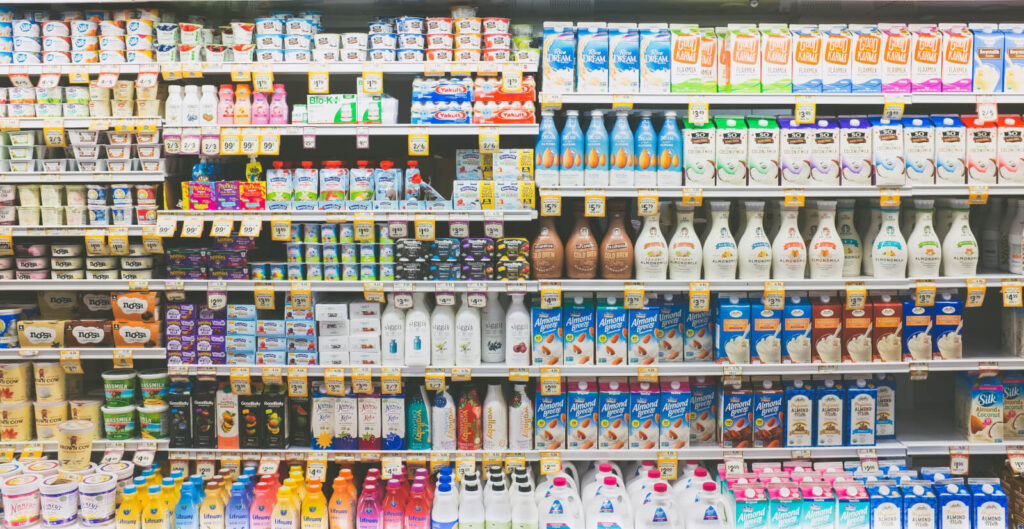If you live in a large suburban city in the US, you’ve probably noticed the emergence of a new way to do your grocery shopping. Different stores have different names for the process (Kroger calls it “ClickList”, HEB refers to it as “Curbside”, and Safeway’s version is “Drive Up & Go”) – but the philosophy is the same.
Here’s how it works: You do your shopping online, browsing groceries and adding them to your digital cart. You select a timeframe to pick your order up, drive to the store, park in a designated spot, and they bring your groceries out to your car. You pay upon pick up or online, and many stores will load your groceries into your car for you, creating almost a “drive thru” grocery shopping experience. There are varying charges for the service based on the store, and many require you to place your order at least 24 hours in advance.
With an increasing number of companies moving towards automated and expedited customer service interactions, it’s no surprise that grocery stores are following suit. There’s no question as to whether the “click to cart” method saves you time (most customers save at least an hour) – but the real question is if it saves you money.
Many grocery shoppers claim that the service absolutely saves them money, but there are a few catches. Here are some pros and cons to help you decide if this service is right for you.

Even with the charge for the service, most people still spend less money using the pick up option. There are a few reasons why.
Most stores will offer substitutes for any products or produce you ordered that they are out of or don’t have in good quality. For example, if you ordered a box of conventional raspberries but they didn’t have any that were ripe, most stores would replace the box with a larger box or box of organic raspberries but only charge you for the original item.
If you use the store’s app, it’s easy to load digital coupons to your order and instantly save money. But since most stores let you pay when you pick up, you can also bring mailed or printable coupons with you that will save you more money as well.
The online shopping experience for most stores also makes it easier to find sale items and shop discounts. You don’t have to scan aisles looking for savings – you can easily compare prices (tag prices and prices per ounce/pound) online and pick the least expensive.
It depends on the store, but you will pay some sort of service or delivery fee. If you are a disciplined shopper and always stick to your list when shopping in the store, then you would simply be paying a premium for convenience.
Most click to cart services will only accept card, so if you’re an all-cash budgeter, this service wouldn’t work for you. It’s been proven that paying with cash means we will spend less of it, so you would have to forfeit that budgeting and savings strategy for this service.
This is both a pro and a con. As mentioned previously, if a store is out of a particular item, most will substitute it with something better or more expensive at no additional cost. However, this is would be inconvenient if you only purchase certain brands or flavors, or need to read the labels on products.
An important piece of information to keep in mind is that the grocers shop the day you’re scheduled to pick up, so if there was a sale on strawberries Thursday when you made your list, but the sale ended Saturday when you picked your groceries up, you’ll pay Saturday’s full price.
Some stores restrict what rebates you can redeem if you use their click to cart service. If you take advantage of rebates on a regular basis, check with the store’s policy on rebate redemption before using their click to cart service.
Ultimately, the answer depends on what kind of shopper you are, how you budget, and the store at which you’re shopping. If you never deviate from your list and stay under budget every month, a click to cart service would just cost you money. If you stick to an all-cash or partly-cash budget, the click to cart service would restrict the way you pay, and would not work well. And if your local grocery store doesn’t offer the service or charges too high of a service fee, then you’ll have to stick to grocery shopping the conventional way.
But for many others who can benefit from a distraction-free, user-friendly, convenient shopping experience, a click to cart solution will likely save you money.
Have you used a service like this? Share your experience and if it saved you money!
Subscribe for Weekly Updates
"*" indicates required fields
Search
Christian Credit Counselors

Is credit card debt causing you stress and strain? Christian Credit Counselors would like to help!